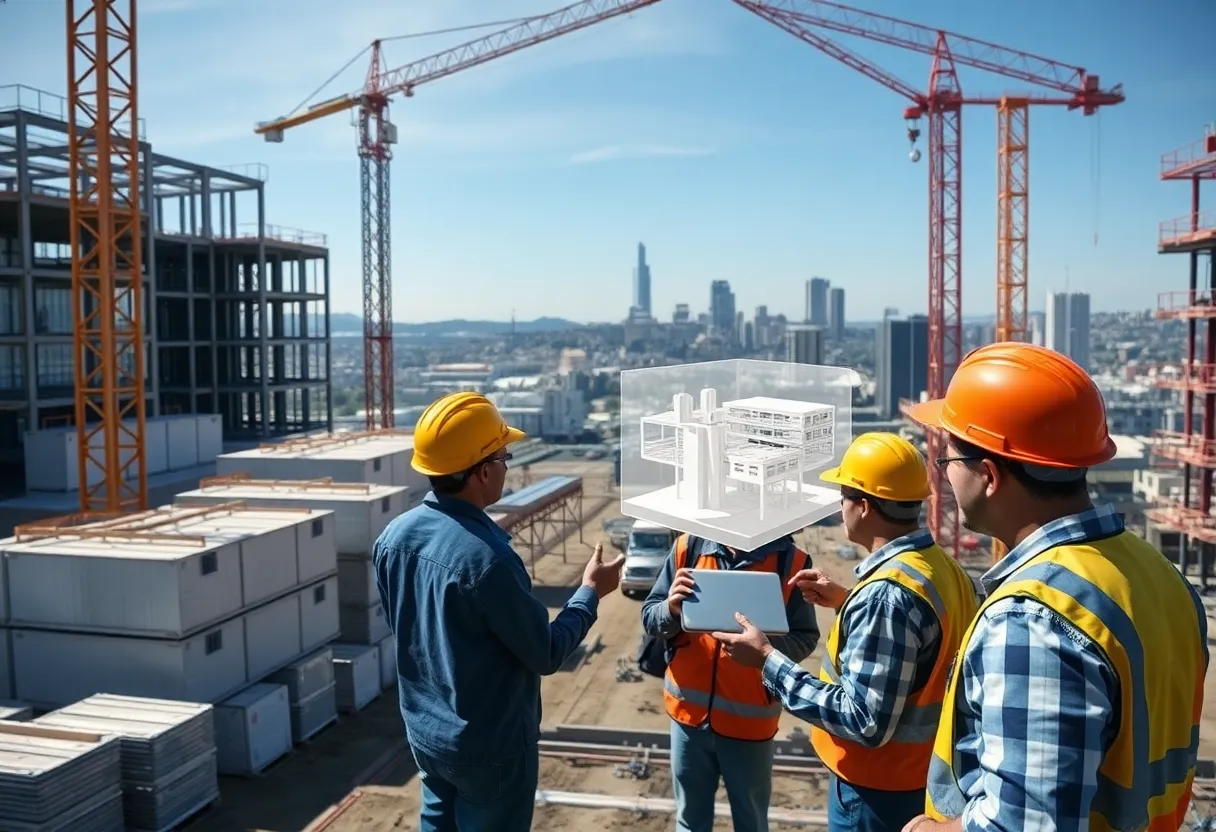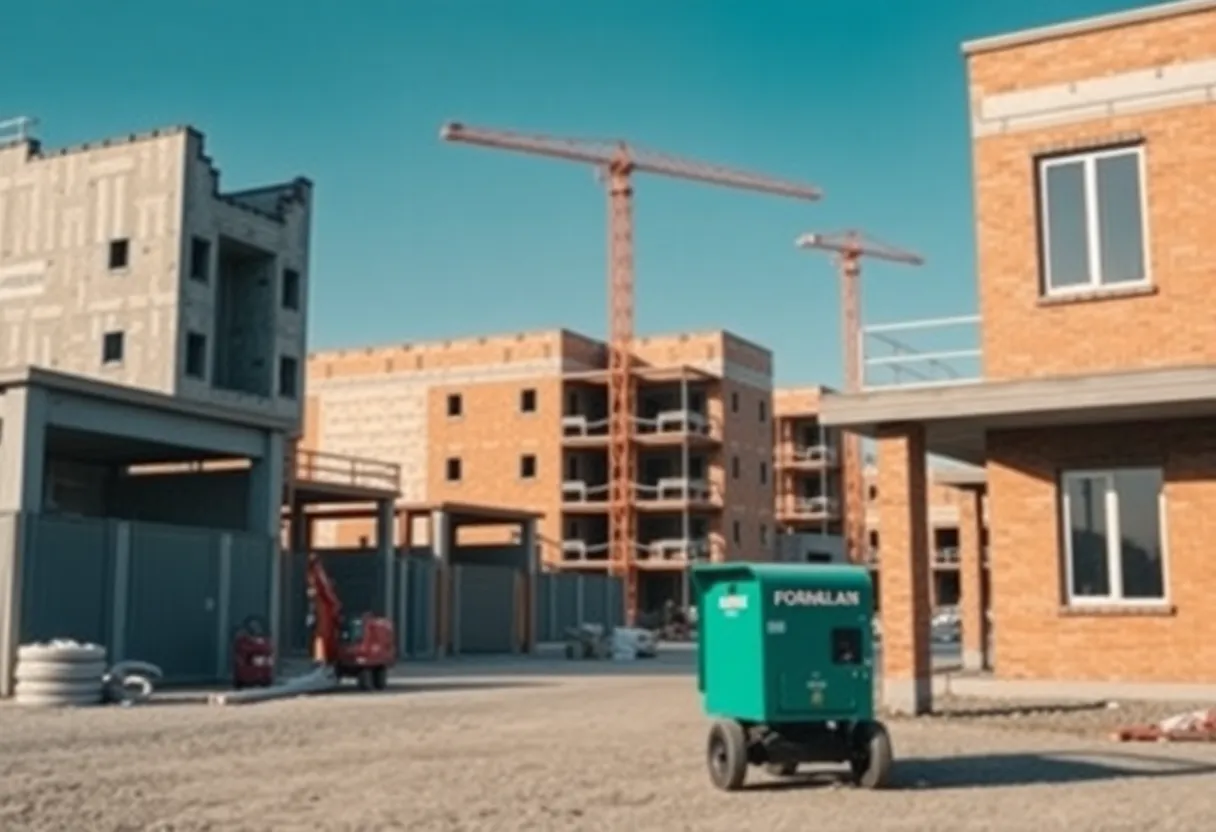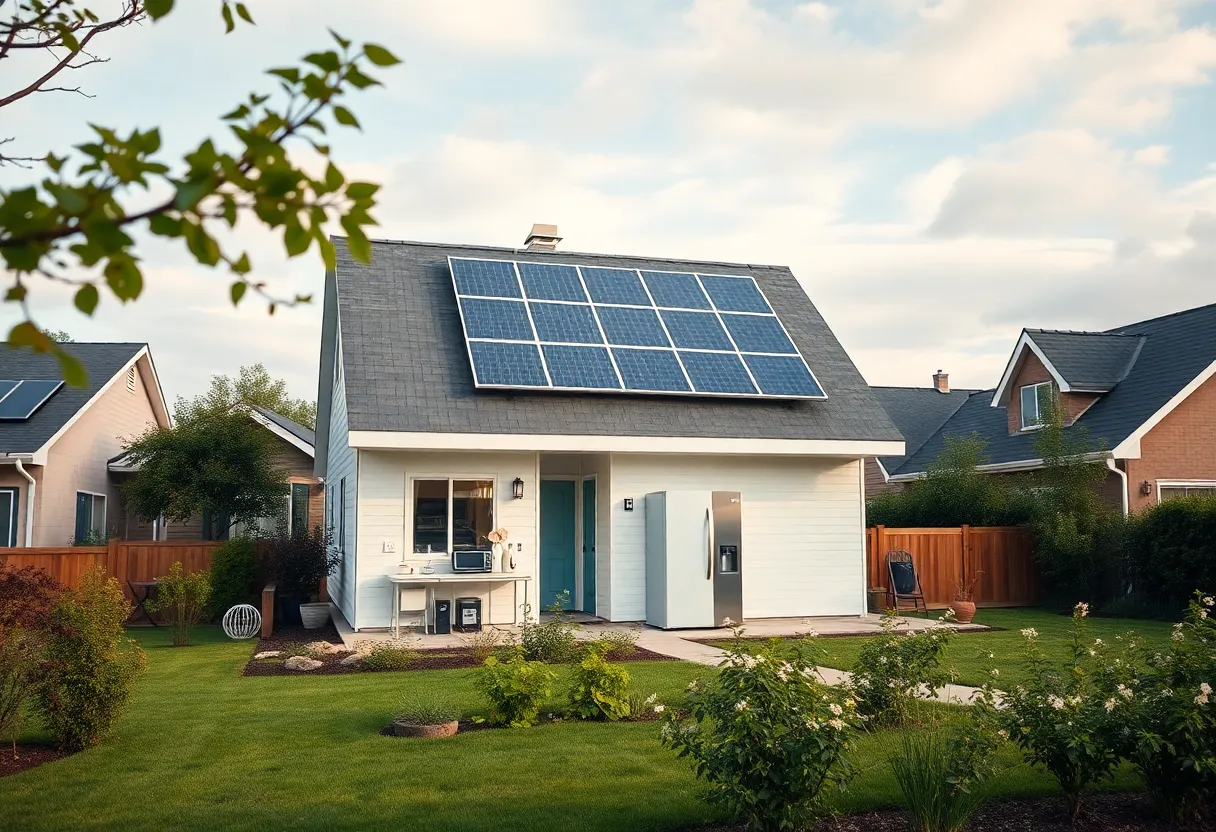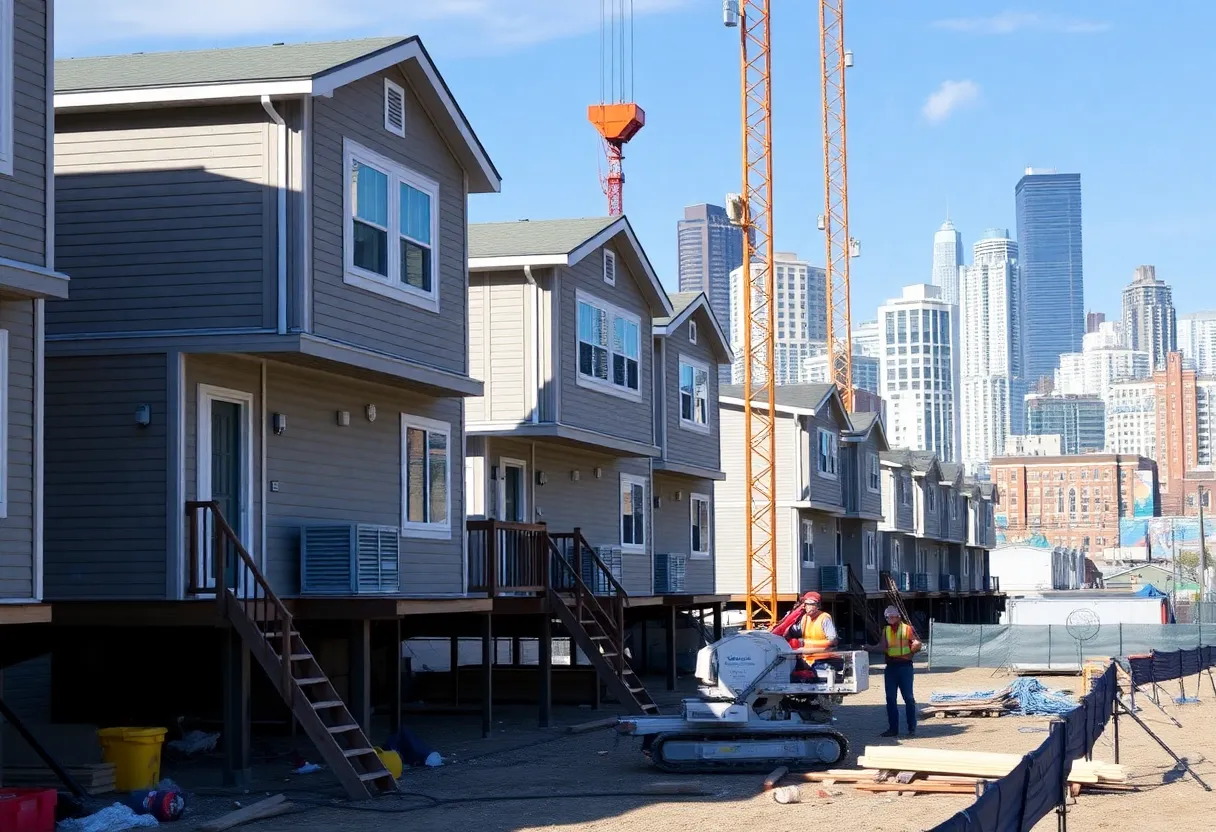Bay Area, August 24, 2025
News Summary
The Bay Area building industry is under pressure from rising wages, new material tariffs, tighter permitting and a shrinking labor pool. Firms are responding by accelerating digital adoption—using BIM, analytics and cloud document platforms—and increasing prefabrication to reduce onsite risk and rework. Large projects face complex approval layers and potential property tax reassessments, so builders are flagging triggers early and building contingencies. Workforce forecasting, CPM scheduling and integrated design-build offerings help manage timelines and client disruption. ADU demand continues amid high regional costs, while firms that combine foresight and disciplined execution can reduce risk and gain advantage.
Bay Area Construction Tightens: Bigger Bills, Tighter Permits, Faster Tech
The Bay Area’s building industry is moving faster and costing more. Contractors and developers face higher labor pay, fresh federal tariffs on key materials, tougher permitting work, and growing use of digital tools to cut risk. Demand for home additions and renovations is strong while large projects get bigger and more complex, putting pressure on teams to plan ahead and adapt quickly.
Costs and labor
Construction costs in the region are rising across the board. Local city wages have climbed above $19 per hour in places such as Sunnyvale and Mountain View, and California raised its minimum wage again in January 2025. New federal tariffs in early 2025 pushed up prices for timber and steel during the first half of the year, forcing firms to update budgets on the fly and rethink supply chains for every stage of a job.
A tighter labor market and pricier materials have made it harder to stage crews, order far in advance, or hold wide buffers for delays. Firms now look to workforce forecasting and scheduling software to lock in crews by skill, location and sequence so small gaps in labor do not cascade into critical delays.
Big projects, more moving parts
Large-scale Bay Area projects — including public infrastructure, multifamily towers and institutional buildings — often carry budgets of $50 million or more and pull funding from many sources. These jobs require multiple layers of permitting and hundreds of subcontractors and vendors across long schedules.
Communication is a recurring challenge: when architects, engineers, contractors and city planners are not aligned, scope can quickly expand and timelines slip. Industry research warns that communication missteps can dramatically inflate budgets and derail schedules, so best-practice teams assign clear roles early and make sure everyone works from the same plan or model.
Digital tools and prefabrication
Firms are adopting virtual design and construction tools such as Building Information Modeling (BIM) to catch clashes and reduce change orders before work begins. The global BIM market was valued at about $7.92 billion in 2025 and analysts forecast growth toward roughly $21 billion by 2034. Using a single, shared model helps teams avoid rework, which in the broader industry can account for up to 30% of costs.
Cloud platforms for documents, scheduling and field reporting reduce version confusion and speed approvals. Construction analytics now track labor efficiency, flag likely delays and benchmark costs in real time, so managers can move people between sites if a drywall crew falls behind, for example. Prefabrication of framing, MEP systems and unitized facades is also gaining traction to shorten on-site time and limit weather exposure.
Permits, reassessment and hidden tax risks
Permitting remains a pinch point. Home building permits statewide fell from about 97,000 in 2019 to roughly 90,000 in 2024, and the San Francisco metro permitted about 5,500 homes from January through November 2024 — fewer than half the roughly 12,500 units permitted during the same span in 2019. Some metro areas have seen steeper drops, which can tighten housing supply and push prices higher.
In addition to permit timelines, physical upgrades can trigger property tax reassessments under state law when work extends building life or changes use. Additions like elevators, major electrical upgrades or converting attic space may prompt reassessment. Experienced builders flag these triggers early and work with city agencies so clients are not surprised by valuation or tax changes.
Workforce planning and project controls
The Critical Path Method (CPM) remains central for identifying tasks that control the overall schedule and where buffer time or acceleration is possible. Firms increasingly use workforce management and HR platforms that handle onboarding, compliance and recurring admin so project leaders can focus on safety and performance. For large builders juggling many sites, forecasting crews months in advance is now as important as sourcing materials.
Accessory dwelling units and renovation demand
Homeowners continue to show interest in accessory dwelling units (ADUs) for rental income, home offices, guest houses or multigenerational living. ADU construction in the Bay Area typically starts at about $500 per square foot. Using a mid-range example, a 750-square-foot ADU at $525 per square foot would cost around $393,750. One-bedroom ADUs often rent for approximately $2,500 per month, though local rules on rentals and rent control vary, so owners are advised to check municipal regulations first.
ADUs include detached units, attached additions, garage conversions, junior ADUs and internal conversions. Each type faces different setback, height and parking rules depending on the city.
Local renovation services expand
A Bay Area firm that focuses on high-end residential remodels has announced expanded renovation services in the region. The company offers design-build services that combine architecture and construction under one team to streamline decision making and keep projects coordinated. The firm emphasizes sustainability and accessibility upgrades and says it plans to tailor services from small kitchen work to full-home remodels while keeping design and execution aligned to client needs.
Bottom line
The Bay Area construction market mixes greater complexity with opportunities for innovation. Firms that pair proactive planning, strong communication, digital models and disciplined execution are best placed to manage rising costs, tighter permitting and a constrained labor pool. Looking ahead, successful teams aim to forecast six months or more, run multiple floors at once where feasible, and keep a clear big-picture focus while handling thousands of daily details.
Frequently Asked Questions
What is driving construction cost increases in the Bay Area?
Higher local wages, new federal tariffs on timber and steel, supply-chain pressures and tighter labor markets are driving up costs across materials, labor and logistics.
How are firms using technology to control costs and schedules?
Many firms use BIM for clash detection, cloud platforms for document management, analytics for labor forecasting, and prefabrication to reduce on-site time and weather risk.
Are ADUs a viable investment in the Bay Area?
ADUs can add value and rental income, but costs are high and rules vary by city. Typical construction starts near $500 per square foot, and owners should review local permit and rental rules before building.
Can renovations trigger higher property taxes?
Yes. Physical upgrades that extend a building’s life or change its use can trigger property tax reassessment under state law. Builders often account for this in early planning.
What should property owners look for in a renovation team?
Choose teams that plan proactively, assign clear roles, use shared models or documentation, and have experience managing permits and possible tax reassessment issues.
Key features at a glance
| Issue | What it means | How teams respond |
|---|---|---|
| Rising labor costs | Wages and minimum wage increases raise project budgets. | Use workforce forecasting and HR platforms to plan crews. |
| Material tariffs | Tariffs push up prices for timber and steel. | Update budgets in real time and diversify supply chains. |
| Tighter permitting | Longer review times and complex approvals slow starts. | Engage city agencies early and include permitting in schedules. |
| BIM and digital tools | Shared models reduce clashes, rework and change orders. | Adopt VDC platforms, cloud docs and analytics for decisions. |
| ADU demand | Home additions remain popular but costlier in the Bay Area. | Work with builders experienced in local rules and budgets. |
| Tax reassessment risk | Major upgrades can trigger property tax changes. | Anticipate reassessment in client conversations and filings. |
| Prefabrication | Off-site assembly shortens on-site schedules and limits delays. | Use modular elements for framing, MEP or facades where feasible. |
Deeper Dive: News & Info About This Topic
Additional Resources
- NOA Design & Build expands to elevate Bay Area renovations (Jacksonville.com)
- Wikipedia: Home renovation
- Delivering excellence in the Bay Area — Rami Tawashas (Ritz Herald)
- Google Search: Rami Tawashas construction
- Berkeley’s People’s Park closed for construction (NBC Bay Area)
- Google Scholar: People’s Park Berkeley construction
- Best ADU builders in the Bay Area (SFGate)
- Encyclopedia Britannica: Accessory dwelling unit
- California housing construction & development (San Francisco Chronicle)
- Google News: Bay Area construction rising costs
Author: Construction NY News
The NEW YORK STAFF WRITER represents the experienced team at constructionnynews.com, your go-to source for actionable local news and information in New York and beyond. Specializing in "news you can use," we cover essential topics like product reviews for personal and business needs, local business directories, politics, real estate trends, neighborhood insights, and state news affecting the area—with deep expertise drawn from years of dedicated reporting and strong community input, including local press releases and business updates. We deliver top reporting on high-value events such as the New York Build Expo, infrastructure breakthroughs, and cutting-edge construction technology showcases. Our coverage extends to key organizations like the Associated General Contractors of New York State and the Building Trades Employers' Association, plus leading businesses in construction and real estate that power the local economy such as Turner Construction Company and CMiC Global. As part of the broader network, including constructioncanews.com, constructiontxnews.com, and constructionflnews.com, we provide comprehensive, credible insights into the dynamic construction landscape across multiple states.





